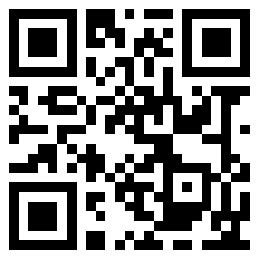What Are Dreams?
A
Many centuries ago, dreams were seen as what the gods conveyed to human beings, and in many cultures today, they are still regarded as prophecies. In ancient Greece, sick people slept at the temples of Asclepius, the god of medicine, in order to receive dreams that would heal them. Modern dream science really began at the end of the 19th century with Sigmund Freud, who theorised that dreams were the expression of unconscious desires often stemming from childhood. The Freudian model of psychoanalysis prevailed until the new research into the chemistry of the brain emerged in the 1970s, which illustrated that psychological problems could result from biological or chemical factors, as well as environmental ones. That is to say, we were ill not just because of what our mothers did (or didn’t do), but because of some imbalance that could be medicated.
B
Another dream theory, developing in the early 1950s and ranking the foremost study in dream science after Freud, discovered a phase of sleep with the characteristics of intense brain activity and rapid eye movement (REM). People who wake up during REM sleep can narrate a vivid dream story, leading the researchers to propose that most dreaming occurs during the REM stage. By the electroencephalograph (EEG), similarities between brain activity during REM and that during wakefulness were shown. So the researchers recognised that much more was underway at night than anyone had suspected. But what, exactly?
C
Scientists still don’t know for sure, although they have lots of theories. There are some scien- tists like Harvard’s Allan Hobson believing that dreams are essentially random. In the 1970s, Hobson and his colleague Robert McCarley created a new term, ‘activation-synthesis hypoth- esis’, which explains how dreams are formed by nerve signals released during REM sleep from the pons, a small area at the base of the brain. These signals, the researchers stressed, will activate the images that we call dreams. Such a description has negatively influenced dream research: what was the meaning of studying dreams if they were merely pointless emission of nerve signals at night?
D
It takes grown-ups about a quarter of sleep time to maintain REM, much of it dreaming. During that time, the body is almost paralysed, but the brain is buzzing. Utilising PET and fMRI technology to monitor the dreaming brain, scientists have discovered that the limbic system controlling our emotions is one of the most active parts during REM. There is much less activity in the prefrontal cortex associated with logical thinking, which explains why dreams in REM sleep usually lack a coherent storyline. (Some researchers have also found that people dream in non-REM sleep likewise, although those dreams generally are less lucid.) Another active part of the brain in REM sleep is the anterior cingulate cortex, whichdetects discrepancies. Eric Nofzinger, director of the Sleep Neuroimaging Program at the University of Pittsburgh Medical Centre, thinks that could be why people often try to solve thorny problems in their dreams. ‘As if the brain surveys the internal milieu and tries to figure out what it should be doing, and whether our actions conflict with who we are,’ he says.
E
It may seem that these are very important mental functions, but there is no evidence that REM sleep or dreaming is critical to daily life or even saneness. An older class of antidepressants called monoamine oxidase inhibitors (MAOIs) could greatly obstruct REM sleep without any detectable side effects, though people do get a ‘REM rebound’ – extra REM – on the condition that they cease the medication. That is also the case of selective serotonin reuptake inhibitors (SSRIs) like Prozac, which could lower dreaming by a third to a half. Even the permanent loss of the capacity of dreaming does not mean being disabled. Peretz Lavie, a researcher from Israel, has been observing a patient Yuval Chamtzani. He got an injury at 19 by a piece of shrapnel penetrating his brain, and consequently, Chamtzani lost REM sleep and could no longer recall any dreams. Nevertheless, Lavie believes that Chamtzani, who is now 55 years old, is possibly the most ordinary person he has known and one of the most out- standing ones. ‘He’s a lawyer, a painter and an editor of the puzzle column in a popular Israeli newspaper,’ says Lavie.
F
REM sleep is mysterious in that even if it may not be indispensable, it is almost omnipres- ent – at least in mammals and birds. However, not all mammals and birds dream (or if they do, they’re certainly not discussing about it). Some researchers consider REM may have undergone evolvement due to physiological elements. ‘One thing that’s unique about mammals and birds is that they can regulate body temperature,’ says neuroscientist Jerry Siegel, director of UCLA’s Centre for Sleep Research. ‘There’s no reliable evidence that any cold-blooded animal has REM sleep.’ Siegel says REM sleep heats up the brain and non-REM cools it off, suggesting that the changing sleep cycles allow the brain to repair itself. ‘It is highly possible REM sleep is supplementing a fundamental physiological function and that dreams are a sort of epiphenomenon,’ he adds, ‘– an extraneous by-product, like the foam on beer.’
G
No matter what functions the nocturnal dreams have, they are undoubtedly beneficial for therapy during the day. The University of Maryland’s Clara Hill, who has studied the use of dreams in therapy, notes that dreams are a ‘back door’ into a patient’s thinking. ‘Dreams reveal stuff about you that you didn’t know was there,’ she says. She is training the thera- pists to work with patients’ dreams, specifically, using dream imagery to expose worries, anxieties and other hidden emotions. Dreams provide hints to the essence of some severe mental diseases. Schizophrenics, for example, suffer from poor-quality dreams, which are usually relevant to objects rather than people. ‘If you intend to understand human behaviour,’ says Rosalind Cartwright, chairman of psychology at Rush University Medical Centre in Chicago, ‘here’s a big piece of it. Dreaming is our own storytelling time to let us know who we are, where we’re going and how we’re going to arrive there.’ Cartwright has been studying depression in divorced men and women, and she has pointed out that ‘good dreamers’, who have lively dreams with strong storylines, are less likely to remain depressed. She thinks that dreaming helps relieve toxic emotions. ‘Dreaming is a mental-health activity,’ she says.
Questions 27 – 31
Reading Passage 3 has seven paragraphs, A–G.
Which paragraph contains the following information?
Write the correct letter, A–G, in boxes 27–31 on your answer sheet.
- 27.mention of the dreams of an artist with versatile talents
- 28.the fact that REM sleep occurs in a range of animals
- 29.the association between dreams and happiness
- 30.the practical scientific technology adopted in REM investigation
- 31.a query about the usefulness of investigation on dreams
Questions 32 – 34
Choose the correct letter, A, B, C or D.
Write the correct letter in boxes 32–34 on your answer sheet.
- 32.What do people in ancient times think of dreams?
- 33.According to Paragraph D, which part of the brain is in charge of reasoning?
- 34.What can we learn from the dreams of the animals mentioned by the writer?
Questions 35 – 40
Look at the following statements (Questions 35–40) and the list of people below.
Match each statement with the correct person, A–G.
Write the correct letter, A–G, in boxes 35–40 on your answer sheet.
List of People
A Eric Nofzinger
B Clara Hill
C Robert McCarley
D Sigmund Freud
E Jerry Siegel
F Rosalind Cartwright
G Allan Hobson
- 35.Dreams sometimes come along with REM sleep as no more than a trivial attachment.
- 36.Probing patients’ dreams would be beneficial for treatment as it uncovers unconscious thinking.
- 37.Dreams assist people in coping with difficulties they encounter in the daytime.
- 38.Decoding dreams would remind people of desires in their early days.
- 39.Dream research can give us a better understanding of ourselves.
- 40.Dreams occur randomly and are stimulated by the neural signals associated with REM sleep.
答案及解析请付费后查阅:
code> 隐藏内容
PASSAGE 3Questions 27 – 40
Questions 27 – 31
Reading Passage 3 has seven paragraphs, A–G.
Which paragraph contains the following information?
Write the correct letter, A–G, in boxes 27–31 on your answer sheet.
- A Paragraph A
- B Paragraph B
- C Paragraph C
- D Paragraph D
- E Paragraph E
- F Paragraph F
- G Paragraph G
- 27. mention of the dreams of an artist with versatile talentsE
- 28. the fact that REM sleep occurs in a range of animalsF
- 29. the association between dreams and happinessG
- 30. the practical scientific technology adopted in REM investigationD
- 31. a query about the usefulness of investigation on dreamsC
Questions 32 – 34
Choose the correct letter, A, B, C or D.
Write the correct letter in boxes 32–34 on your answer sheet.
- 32. What do people in ancient times think of dreams?
- A an unreliable superstition
- B opportunities to communicate with God and predict the future
- C medical relief for children with undesirable desires
- D rules to follow when sleeping in the temple
- 33. According to Paragraph D, which part of the brain is in charge of reasoning?
- A anterior cingulate cortex
- B internal milieu
- C limbic system
- D prefrontal cortex
- 34. What can we learn from the dreams of the animals mentioned by the writer?
- A Brain temperature rises when the REM pattern happens.
- B The explanation why mammals are warm-blooded is related to REM sleep.
- C Mammals are bound to appear with more frequent REM.
- D REM makes people want to drink beer with more foam.
Questions 35 – 40
Look at the following statements (Questions 35–40) and the list of people below.
Match each statement with the correct person, A–G.
Write the correct letter, A–G, in boxes 35–40 on your answer sheet.
- A Eric Nofzinger
- B Clara Hill
- C Robert McCarley
- D Sigmund Freud
- E Jerry Siegel
- F Rosalind Cartwright
- G Allan Hobson
- 35. Dreams sometimes come along with REM sleep as no more than a trivial attachment.E
- 36. Probing patients’ dreams would be beneficial for treatment as it uncovers unconscious thinking.B
- 37. Dreams assist people in coping with difficulties they encounter in the daytime.A
- 38. Decoding dreams would remind people of desires in their early days.D
- 39. Dream research can give us a better understanding of ourselves.F
- 40. Dreams occur randomly and are stimulated by the neural signals associated with REM sleep.G
梦是什么?
A 许多世纪以前,梦被视作神传达给人类的东西,并且在如今许多文化中, 它仍然被视为预言。在古希腊,生病 的人会睡在医药之神阿斯克勒庇俄斯(Asclepius)的神庙中,以便接受梦境的治愈。现代的梦境学实际上开始于 19 世纪末,随着西格蒙德 · 弗洛伊德(Sigmund Freud)提出梦是潜意识欲望的一种表达,而这些欲望通常源自童年时期。弗洛伊德式的心理分析模型一直十分盛行,直到 20 世纪 70 年代对大脑化学组成的新研究出现,该研究表明,心理问题可能是由生物因素或化学因素引起的,也可能是环境因素引起的。也就是说,我们生病不只是因为我们的母亲以前做了什么(或 没有做什么),也有可能是因为某些可以用药物进行治疗的(身体机能上的)失衡。
B 还有一种梦境理论形成于 20 世纪 50 年代早期,是继弗洛伊德之后,梦境学中最重要的一项研究 ;它发现了睡眠中的一个阶段,其特征是剧烈的大脑活动和快速的眼球运动(REM)。在快速眼动睡眠中醒来的人可以讲述一个生动的梦境,因此研究人员提出大多数的做梦行为都发生在快速眼动阶段。据脑电图仪(EEG)显示,快速眼动期间的大脑活动与清醒状态下的大脑活动之间存在着相似之处。于是研究人员意识到,大脑在夜间进行的活动比任何人所猜想的都要多。但到底是什么样的活动呢?
C 尽管科学家们提出了很多理论,但到现在仍无法确定。一些科学家,比如哈佛大学的阿伦 · 霍布森(Allan Hobson), 认为梦境在本质上是随机的。 在 20 世纪 70 年代, 霍布森和他的同事罗伯特 · 麦卡利(Robert McCarley)创造了一个新的术语,即“活化—合成假说”;该假说解释了脑桥这个大脑底部的一个小区域在快速眼动睡眠期间释放出的神经信号是如何形成梦境的。研究人员强调,这些信号会激活我们称之为“梦”的画面。这样的描述对梦境研究产生了负面影响 :如果梦境只是在晚上发出的毫无意义的神经信号,那么研究梦境还有什么意义呢?
D 成年人四分之一的睡眠时间都用在了快速眼动上,其中很多时间都是在做梦。在这个时间段里,身体几乎是无法动弹的,但大脑仍在运转。科学家们利用正电子发射扫描(PET)和功能性磁共振成像(fMRI)技术监测做梦时的大脑,发现控制我们情绪的大脑边缘系统是快速眼动期间最活跃的部分之一。与逻辑思维相关的前额叶皮层的活跃性要差得多,这也就解释了为什么在快速眼动睡眠中的梦境通常缺乏连贯的故事情节。(一些研究人员还发现,人们在非快速眼动睡眠期间也会做梦,虽然这些梦通常没有那么清晰。)大脑在快速眼动睡眠期间另一个活跃的部分是前扣带皮层,它是负责检测差异的。匹兹堡大学医学中心睡眠神经成像项目的负责人埃里克 · 诺夫辛格(Eric Nofzinger)认为,这可能就是人们经常试图在梦境中解决棘手问题的原因。他说 :“就好像大脑会检测内部环境并试图弄清楚应该做什么,以及我们的行为是否与我们的身份相冲突。”
E 尽管这些看起来都是非常重要的心智功能,但并没有证据表明快速眼动睡 眠或做梦对于日常生活乃至心智健全 来说很重要。有一种较早的抗抑郁药物,叫作单胺氧化酶抑制剂(MAOIs);它能够极大地阻碍快速眼动睡眠,且没有任何明显的副作用 ;不过在停药 的情况下,人们确实会出现“快速眼 动睡眠反弹”,即额外的快速眼动睡眠。像百忧解(Prozac)这样的选择性血 清再吸收抑制剂(SSRIs)也是如此,它会使做梦频率降低三分之一至一半。 但即使永久失去做梦的能力也并不意 味着残疾。以色列研究人员佩雷茨 · 拉维(Peretz Lavie)一直在观察病人尤瓦尔 · 查姆扎尼(Yuval Chamtzani)。 尤瓦尔 · 查姆扎尼在 19 岁时被一块弹片刺伤大脑而因此失去了快速眼动睡眠,无法再回忆起任何梦境。尽管如此, 拉维认为现年 55 岁的查姆扎尼可能是他所认识的人里最正常的一个,也是最优秀的一个。拉维说 :“他是一名律师、一位画家,同时也是以色列一家知名报纸字谜专栏的编辑。”
F 快速眼动睡眠的神秘之处就在于,即使它不是必不可少的,但却几乎无处 不在——至少对哺乳动物和鸟类而言是这样的。但是,并非所有的哺乳动物和鸟类都会做梦(或者说就算它们会做梦,它们肯定也不会对此进行讨论)。一些研究人员认为,可能由于一些生理因素,快速眼动睡眠已经有所演化。加州大学洛杉矶分校睡眠研究中心负责人兼神经科学家杰里·西格尔(Jerry Siegel)说 :“哺乳动物和鸟类的独特之处在于它们能调节体温。并没有可靠的证据表明冷血动物也有快速眼动睡眠。”西格尔表示快速眼动睡眠会使大脑温度上升,而非快速眼动睡眠使之下降 ;这可能意味着睡眠周 期的变化可以促进大脑进行自我修复。他还补充道 :“快速眼动睡眠很可能是 在为身体补充一种基本的生理功能, 而‘ 梦 ’ 是一种附带现 象。 —— 也就是一种无关的副产品,就像啤酒的泡沫。”
G 无论夜间的梦有什么功能,它们对于 白天的治疗无疑是有益的。马里兰大学的克拉拉 · 希尔(Clara Hill)研究了梦境在治疗中的运用;她指出,梦境是了解患者思想状况的“后门”。她 说 :“梦境会揭示一些跟你有关,但你之前却一直没有意识到的东西。”她正在培训一些心理治疗师,让他们试着去利用患者的梦境。具体来说,就 是利用梦的意象来发现患者的担忧、焦虑,以及其他隐藏的情绪。梦境为发现一些严重的精神疾病的本质提供了线索。例如,精神分裂症患者的梦境质量差,这通常与物体有关,而非与人有关。芝加哥拉什大学医学中心的心理学科主席罗莎琳德 · 卡特赖特(Rosalind Cartwright)表示 :“如果你想了解人类的行为,那么研究梦境就很重要。做梦是讲述我们自己的故事的时间,以便让我们知道我们是谁、我们想要去哪里以及如何到达那里。” 卡特赖特一直在研究离婚男女的抑郁 状况,她指出,“好梦者”也就是那些 梦境生动且有较强故事情节的人通常不会抑郁。她认为做梦有助于缓解一些不良情绪。她说 :“做梦是一种心理健康活动。”
- 第 27 / 40 题正确答案: E
我的答案: No answer
解析
题干 :提及一位多才多艺的艺术家的梦。题干的关键信息为 dreams、an artist with versatile talents。通过 an artist with versatile talents 可定位到 E 段最后 1 句 :“‘He’s a lawyer, a painter and an editor of the puzzle column in a popular Israeli newspaper,’ says Lavie.”。其中 a lawyer, a painter and an editor 对应题干中的 an artist with versatile talents。另外,本段倒数第 3 句也确实提到过这位艺术家的梦。因此,本题的答案为 E。
- 第 28 / 40 题正确答案: F
我的答案: No answer
解析
题干 :很多动物都拥有快速眼动睡眠的事实。题干的关键信息为 REM sleep、a range of animals,据此可定位到 F 段第 1 句 :“REM sleep is mysterious in that even if it may not be indispensable, it is almost omnipresent – at least in mammals and birds.”。其中mammals and birds 对应题干中的 animals,almost omnipresent 对应 occurs in a range of。因此,本题的答案为 F。
- 第 29 / 40 题正确答案: G
我的答案: No answer
解析
题干 :梦与快乐之间的联系。题干的关键信息为 association、dreams、happiness。通 过 happiness 可推断这里说的是梦境和情绪(emotions)之间的关系,扫读发现 G 段 第 4 句、倒数第 1—3 句,其中 worries, anxieties and other hidden emotions、depres-sion、depressed 都体现出了 emotions 这个信息,而 relieve toxic emotions、mental-health activity 则是 happiness 的同义表达,原文是说做梦可以帮助揭示并缓解这些不 良情绪,以此保持心理健康。因此,本题的答案为 G。
- 第 30 / 40 题正确答案: D
我的答案: No answer
解析
题干 :快速眼动睡眠研究中所采用的实用科技。题干的关键信息为 scientific technol-ogy、REM investigation,据此可定位到 D 段第 3 句 :“Utilising PET and fMRI technol-ogy to monitor the dreaming brain, scientists have discovered that the limbic system con-trolling our emotions is one of the most active parts during REM.”。其中 PET and fMRI technology 对应题干中的 scientific technology,Utilising 对应 adopted,scientists have discovered that 则体现出了这是一项研究。因此,本题的答案为 D。
- 第 31 / 40 题正确答案: C
我的答案: No answer
解析
题干 :对梦境研究是否有用的质疑。题干的关键信息为 query、usefulness of inves-tigation on dreams,据此可定位到 D 段最后 1 句 :“Such a description has negatively influenced dream research: what was the meaning of studying dreams if they were merely pointless emission of nerve signals at night?”。其中 what was the meaning of、if they were merely pointless 体现出了题干的含义。因此,本题的答案为 C。
- 第 32 / 40 题正确答案: B
我的答案: No answer
解析
- 题干 :古人是如何看待梦境的?题干的关键信息为 people in ancient times,据此可定位到 A 段第 1 句 :“Many centuries ago, dreams were seen as what the gods conveyed to human beings, and in many cultures today, they are still regarded as prophecies.”。这句 话是说许多世纪以前,梦被视作神传达给人类的东西,直到如今仍被视为预言,其 中 what the gods conveyed to human beings、prophecies 对应选项 B 的 opportunities to communicate with God and predict the future,故选项 B 正确。选项 A“不可靠的迷信” 可通过本段接下来的内容来排除,古人赋予了梦境很重要的意义与选项 A 所说不符。 选项 C“对有不良欲望的儿童的医疗救济”的关键信息为 medical relief、undesirable desires,文中虽然出现了 desires,但和选项 C 说的不是一回事,且这是 Freud 所提出的理论,与古人无关。选项 D“在神庙睡觉时要遵守的规矩”的关键信息为 rules、 temple,而 temple 出现附近并未提及 rules。因此,本题的答案为 B。
- 33 / 40 题正确答案: D
我的答案: No answer
解析
题干 :根据 D 段,大脑的哪一部分负责推理?题干的关键信息为 Paragraph D、part of the brain、reasoning,据此可定位到 D 段第 4 句 :“There is much less activity in the prefrontal cortex associated with logical thinking, which explains why dreams in REM sleep usually lack a coherent storyline.”。其中 logical thinking 对应题干中的 reasoning,associated with 对应 in charge of。选项 A“前扣带皮层”出现在 D 段倒数第 3 句,它 是负责检测差异的 ;选项 B“内部环境”出现在 D 段最后 1 句,但它并非大脑结构 中的一部分 ;选项 C“大脑边缘系统”出现在 D 段第 3 句,这一部分控制的是情绪。 因此,本题的答案为 D。
- 34 / 40 题正确答案: A
我的答案: No answer
解析
题干 :通过作者提及的动物的梦境,我们从中可以知道什么?题干的关键信息为 dreams of the animals,据此可锁定 F 段,然后将各选项关键信息与原文所在句进行 一一比对即可。选项 A“快速眼动睡眠发生时,大脑的温度会上升”的关键信息为 Brain temperature rises、REM,其中 temperature 出现在 F 段第 4 句,这句话是说哺 乳动物和鸟类的独特之处在于它们能调节体温,接着又对这句话进行了解释 :“REM sleep heats up the brain and non-REM cools it off, …”,其中 heats up the brain 对应选 项 A 中的 Brain temperature rises,选项与原文信息相符,故正确。选项 B“哺乳动 物是温血动物的原因与快速眼动睡眠有关”的关键信息为 why mammals are warm-blooded,文中并未提及。选项 C“哺乳动物必然会出现更频繁的快速眼动”的关键信 息为 Mammals、more frequent REM,其中 Mammals 出现在 F 段前半部分,提到它们 存在快速眼动睡眠,但是否 more frequent 并未提及。选项 D“快速眼动会让人想喝 带有更多泡沫的啤酒”的关键信息为 drink beer with more foam,其中 beer、foam 出 现在 F 段最后 1 句,但和选项 D 的意思无关。因此,本题的答案为 A。
- 第 35 / 40 题正确答案: E
我的答案: No answer
解析
题干 :梦有时只是作为一种无关紧要的附属产品伴随着快速眼动睡眠而来。题干的关键信息为 come along with REM、trivial attachment。通过 trivial attachment 可定位到 F 段最后 1 句 :“‘It is highly possible REM sleep is supplementing a fundamental physi-ological function and that dreams are a sort of epiphenomenon,’ he adds, ‘– an extraneous by-product, like the foam on beer.’”。后半句是说梦只是一种附带现象,也就是一种无 关的副产品,其中 epiphenomenon 和 by-product 均为题干中 attachment 的同义表达,extraneous 对应 trivial。这句话为 Siegel 的观点。因此,本题的答案为 E。
- 第 36 / 40 题正确答案: B
我的答案: No answer
解析
题干 :探究病人的梦境有助于治疗,因为它会揭示出病人潜意识中的想法。题干的关键信息为 Probing patients’ dreams、beneficial for treatment、unconscious thinking。 通过 beneficial for treatment 可首先定位到 G 段第 1 句的 beneficial for therapy,接着 第 2—3 句展开了具体的描述 :“… notes that dreams are a ‘back door’ into a patient’s thinking. ‘Dreams reveal stuff about you that you didn’t know was there,’ she says.”。这 句话是说梦是了解患者思想状况的“后门”以及梦境会揭示一些你自己之前一直没 有意识到的东西,其中 a ‘back door’ into 和 reveal 均对应题干中的 uncovers,stuff about you that you didn’t know was there 则对应 the unconscious thinking。这两句话均 为 Clara Hill 的观点。因此,本题的答案为 B。
- 第 37 / 40 题正确答案: A
我的答案: No answer
解析
题干 :梦会帮助人们应对白天遇到的困难。题干的关键信息为 coping with difficul-ties,据此可定位到 D 段倒数第 2 句 :“Eric Nofzinger … thinks that could be why people often try to solve thorny problems in their dreams.”。其中 solve 对应题干中的 cope with, thorny problems 对应 difficulties。这句话为 Eric Nofzinger 的观点。因此,本题的答案为 A。
- 第 38 / 40 题正确答案: D
我的答案: No answer
解析
题干 :解读梦境可以使人们想起他们早期的欲望。题干的关键信息为 Decoding dreams、desires in their early days。通过 desires in their early days 可定位到 A 段第 3 句 : “… who theorised that dreams were the expression of unconscious desires often stemming
from childhood.”。其中 childhood 对应题干中的 early days,这里是说梦是源自童年时 期欲望的一种表达,与题干表述相符。这句话为 Sigmund Freud 的观点。因此,本题 的答案为 D。
- 39 / 40 题正确答案: F
我的答案: No answer
解析
题干 :梦境研究可以让我们更好地了解自己。题干的关键信息为 Dream research、 better understanding of ourselves。通过 better understanding of ourselves 可定位到 G 段的中间 :“‘If you intend to understand human behaviour,’ says Rosalind Cartwright, chairman of psychology at Rush University Medical Centre in Chicago, ‘here’s a big piece of it. Dreaming is our own storytelling time to let us know who we are, where we’re going and how we’re going to arrive there.’”。其中 let us know who we are, where we’re going and how we’re going to arrive there对应题干中的better understanding of ourselves。显然,这是 Rosalind Cartwright 的观点。因此,本题的答案为 F。
- 第 40 / 40 题正确答案: G
我的答案: No answer
解析
题干 :梦是随机发生的,而且是由快速眼动睡眠的神经信号刺激产生的。题干的关键 信息为 occur randomly、neural signals,据此可定位到 C 段第 2—3 句 :“… dreams are essentially random … dreams are formed by nerve signals released during REM sleep …”。 其中 essentially random 对应题干中的 occur randomly,nerve signals 对应 neural signals。结合判断,这是 Allan Hobson 的观点,注意不能选择 Robert McCarley,因 为文中并未提到 Robert McCarley 认为梦是随机发生的。因此,本题的答案为 G。







